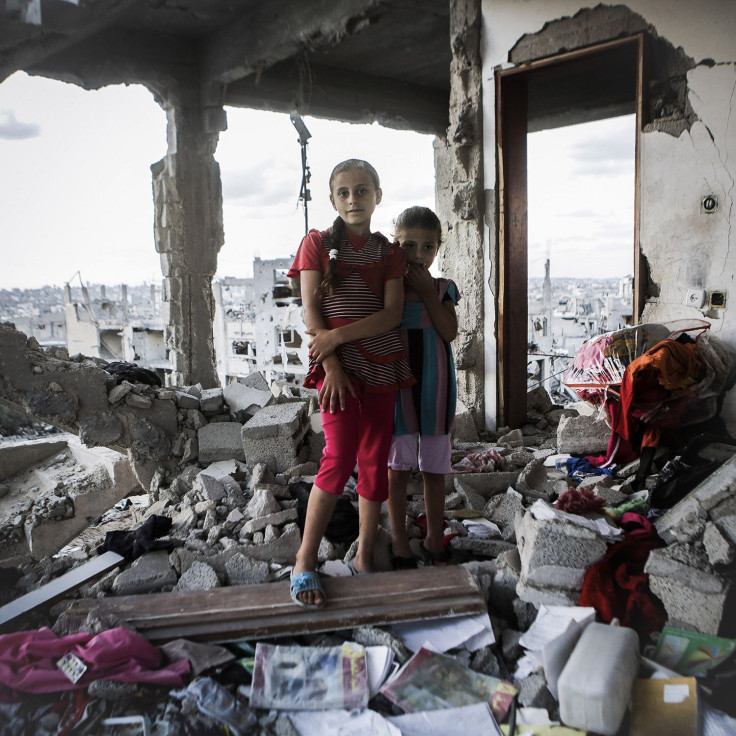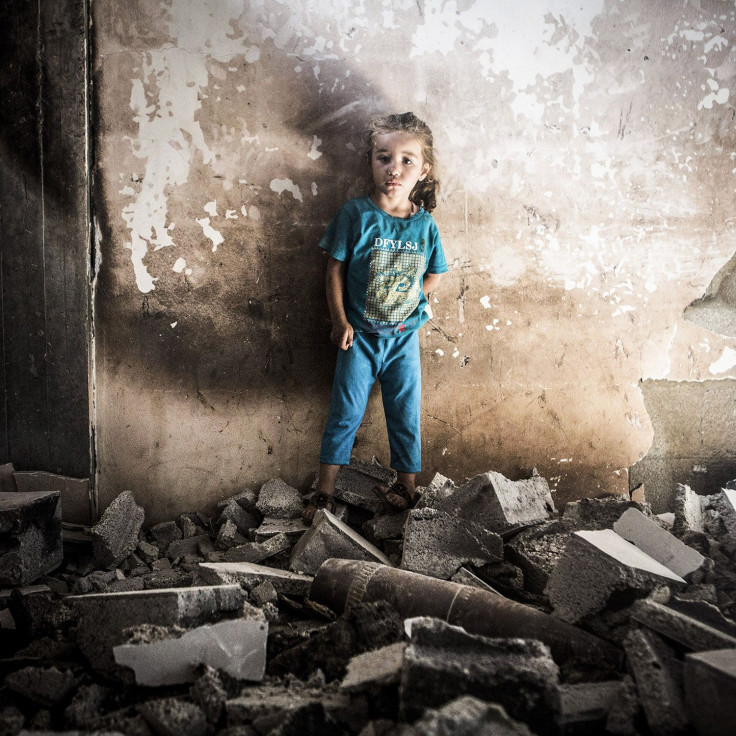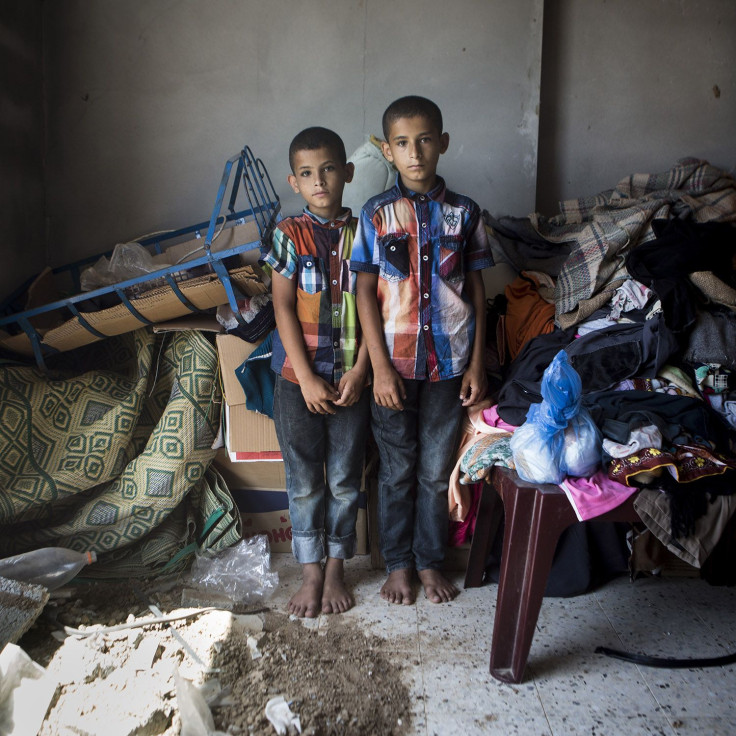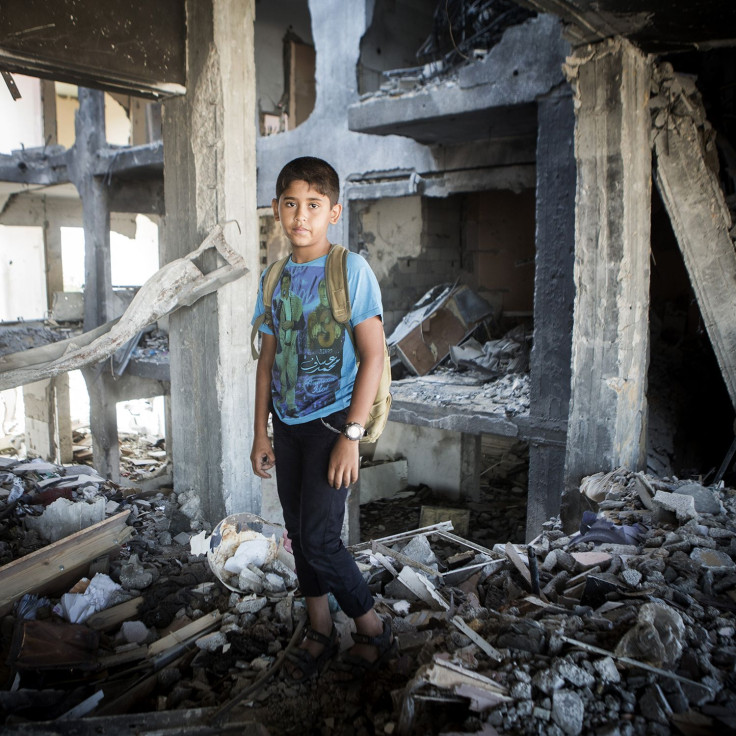Portraits Of Gaza's Children And Their Lost Homes

On July 7, 2014, Israel launched its latest military endeavor in the Gaza Strip, Operation Protective Edge. The conflict produced a massive amount of destruction, with approximately 110,000 Palestinians losing their homes and nearly 18,000 housing units destroyed.
Anne Paq, a 38-year-old photographer, has been documenting the operation and its aftermath since the ceasefire on Aug. 26. While Israel Defense Forces soldiers are rarely seen in Gaza, the sound of drones, border shootings between Hamas militia and IDF troops and other ceasefire violations are constant reminders that Gaza is still very much a conflict zone. “It has been draining, both physically and emotionally. How can you witness such level of violence, such pain and be immune? This is impossible, and as many others of my colleagues, I was deeply affected,” Paq told International Business Times.
Paq shoots for the photo collective ActiveStills, composed of Israeli, Palestinian and international photographers, and has been heavily involved in Palestine for the past 10 years. She now focuses on the families who were affected in last summer's conflict by documenting children in their destroyed homes.

“I was not accompanied by a psychologist, so my choice was actually to spend as little time as possible in their destroyed bedrooms and just to ask the simple question about what they missed from their bedroom,” Paq said. “Just by looking straight into the camera for a few seconds, they displayed their emotions in a very strong way, and it was not needed to put it into words.”
Preliminary estimates say that more than 1,500 orphaned children will need sustained support from child protection and welfare services, and according to the United Nations, it will take 20 years to rebuild the destroyed areas of Gaza.
“Among them, Mayssa was one that touched me the most. I have known her since she was 8 years old. I met her family in 2010; they just lost their mother, Neem'a, who was killed by an Israeli attack near their home,” Paq said.

Mayssa’s home was attacked a second time in 2011. Her father, Nasser, decided to move the family away from the border and managed to build a new home after having lived for three years in tents.
“I was in touch with Nasser during the offensive,” Paq said, “and I heard the terrible news that their home was destroyed again. They currently live in a school in Al-Bureij camp in very bad conditions.”
Paq began collecting money to help rebuild a modest tin home for Nasser’s family and she hopes they can move again before winter arrives. The family is one of many who now live in the homes of relatives, in schools, shacks or half-destroyed buildings, and Paq said she believes the situation will only become worse.
“The last bit of hope has been broken for the inhabitants,” she said. “Nearly everyone thinks about leaving Gaza, because they cannot see any future here, and who can blame them? Gaza is boiling with growing frustration, and I believe the people reached a breaking point.”

Despite the risks of working in Gaza Strip -- 16 journalists were killed in 2014 -- Paq has begun preparations to return by the beginning of 2015: “I am planning to continue my work on the aftermath, and also I am planning to continue focusing on children. I have a big project on the families who were killed (all members or many) during the offensive. I want to dig and take the stories out there.”

© Copyright IBTimes 2024. All rights reserved.





















